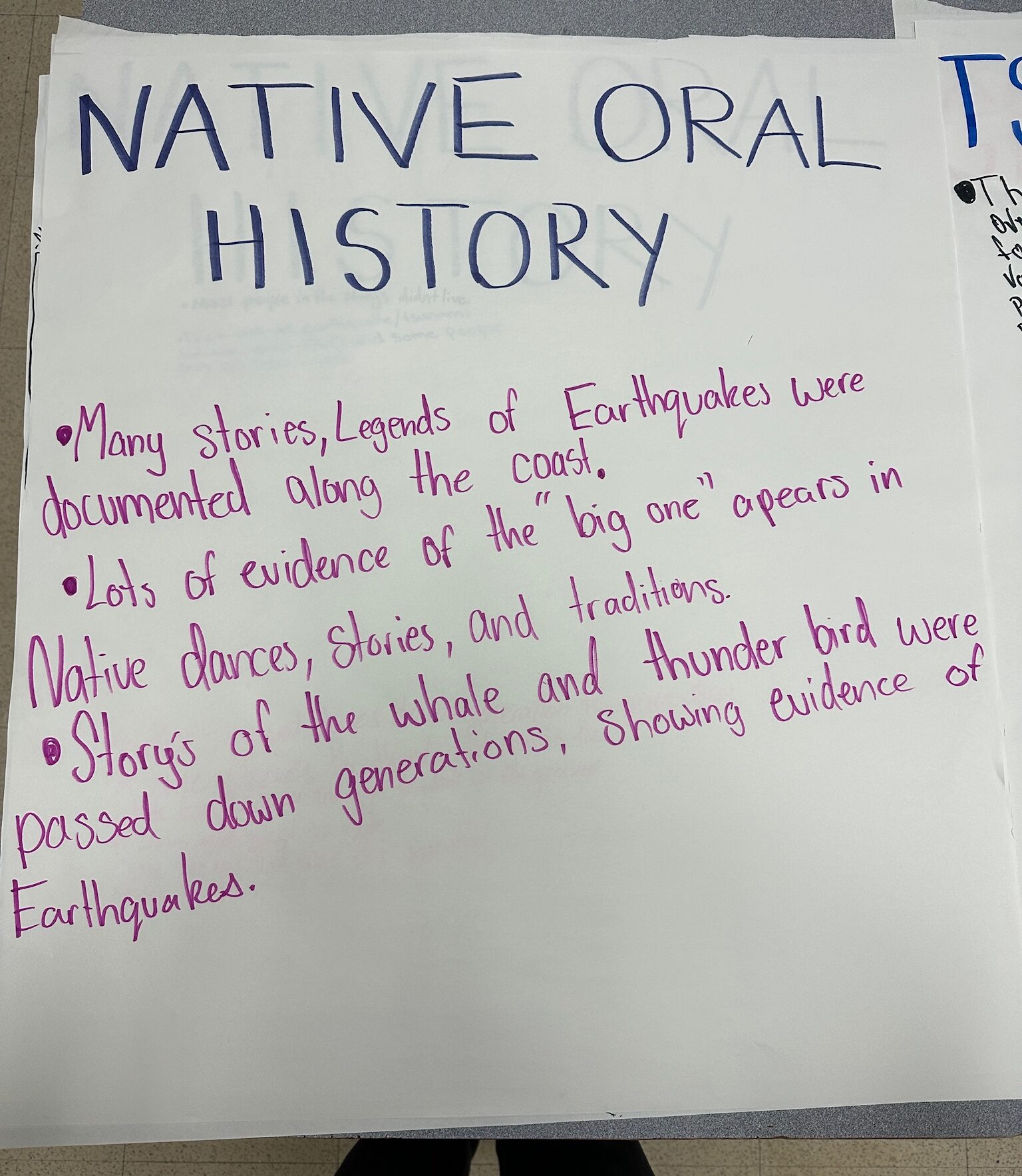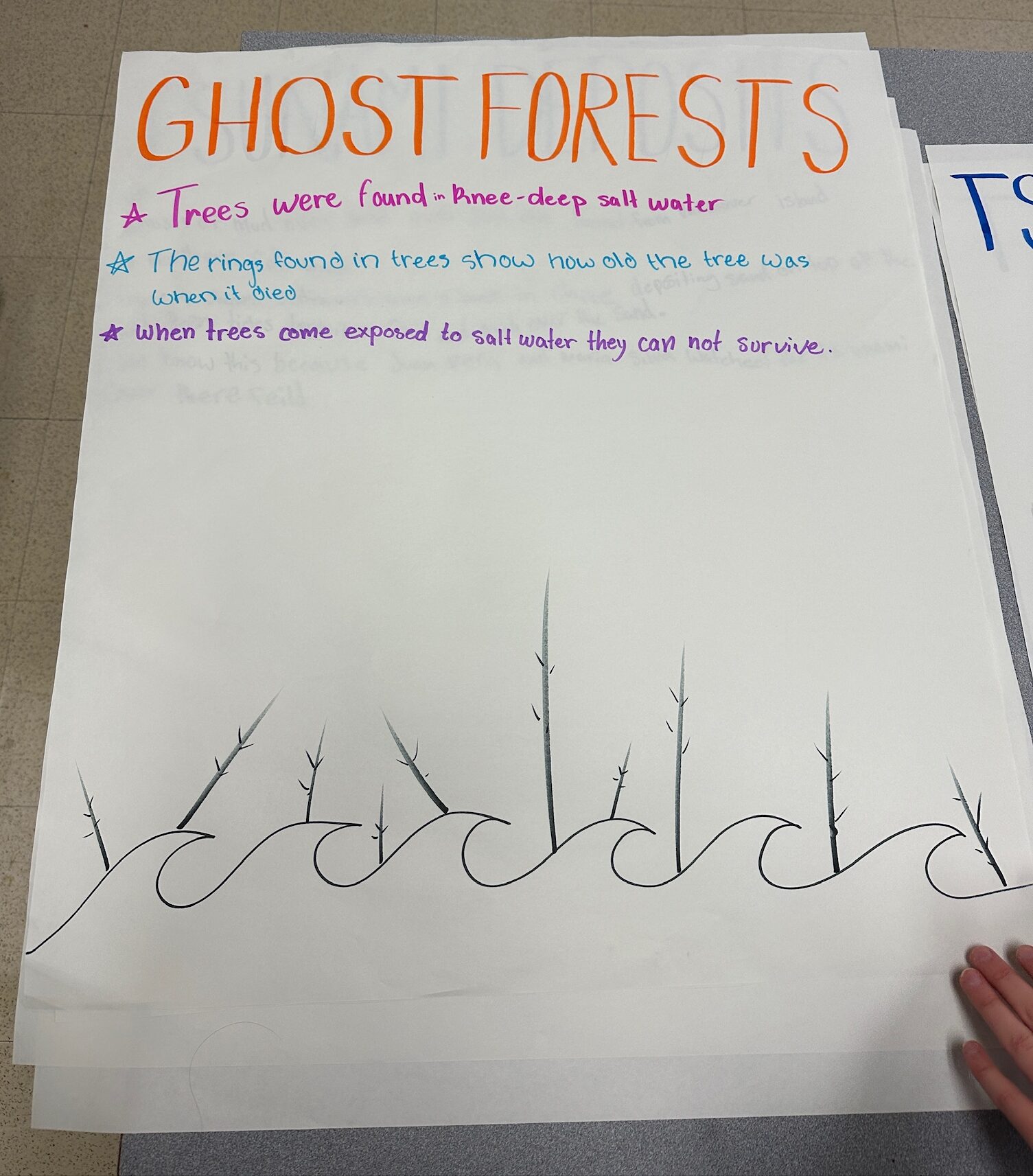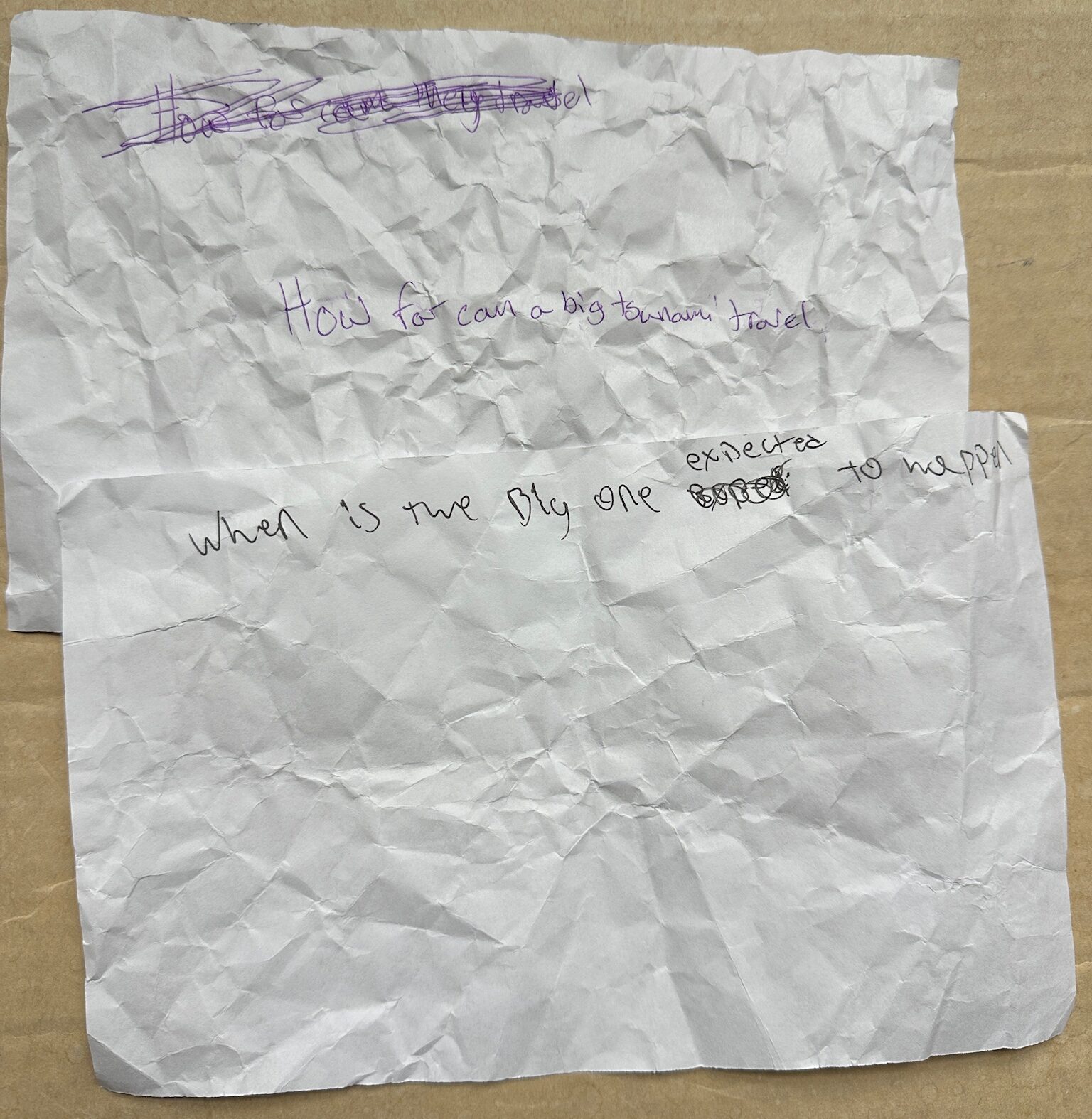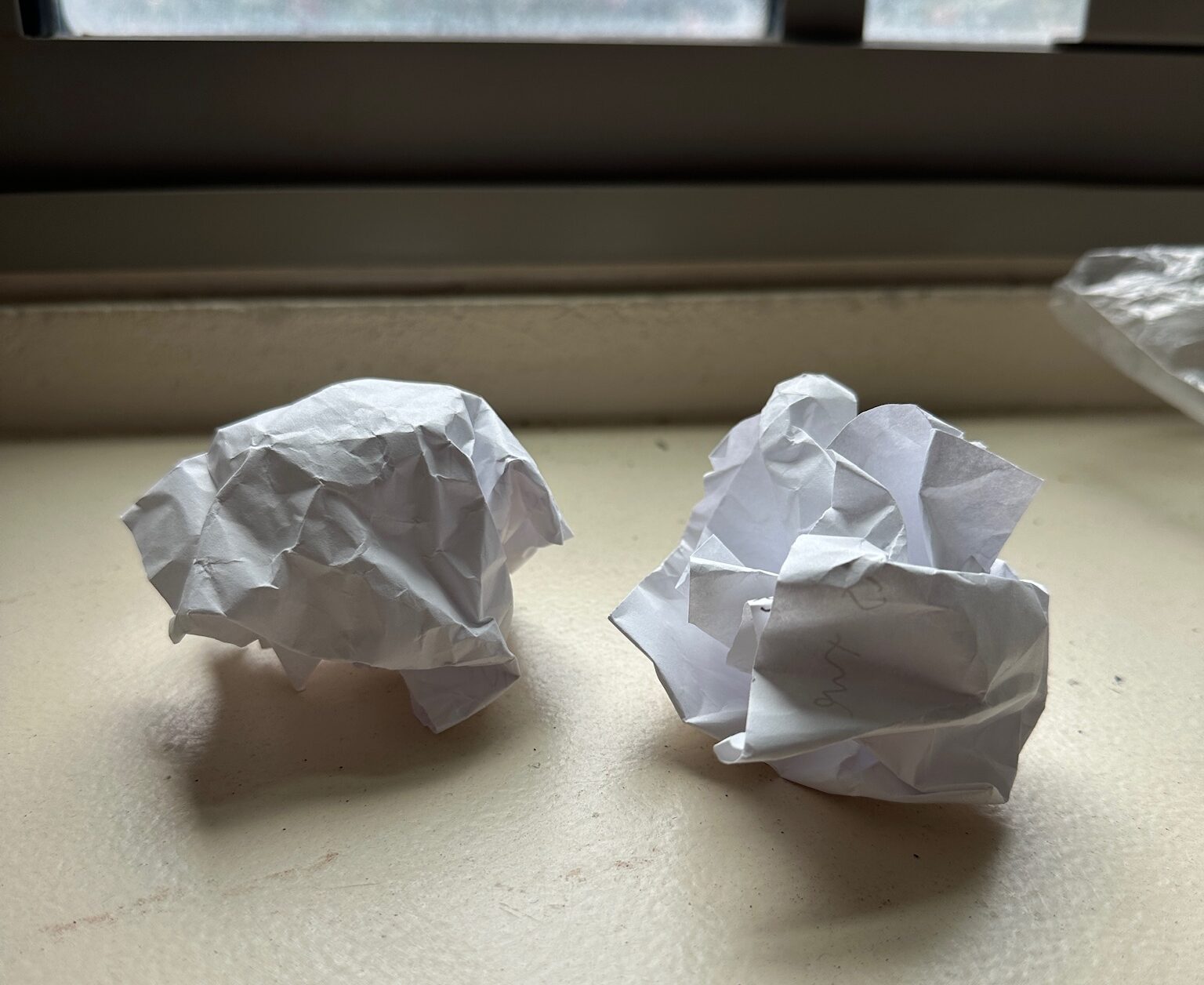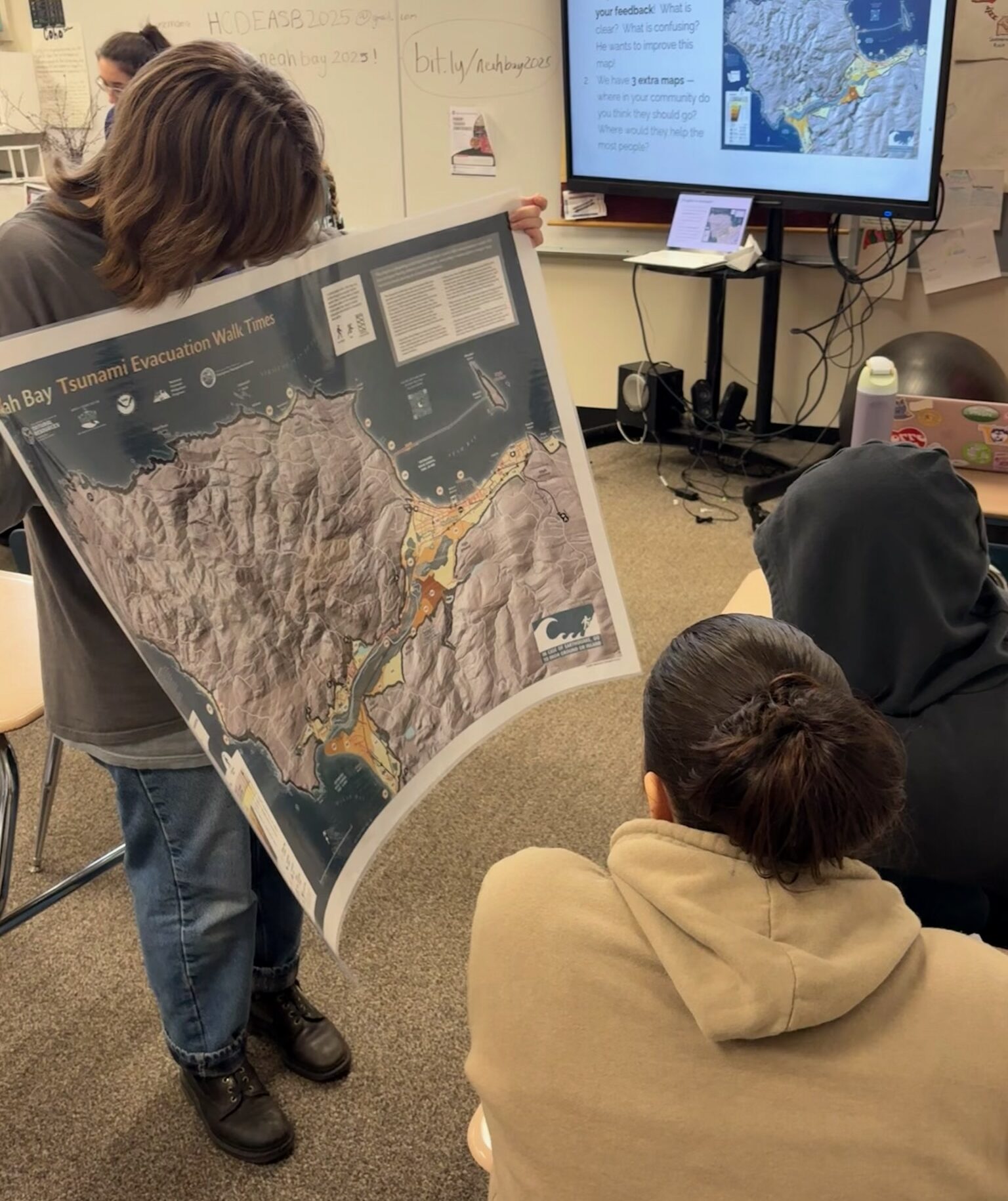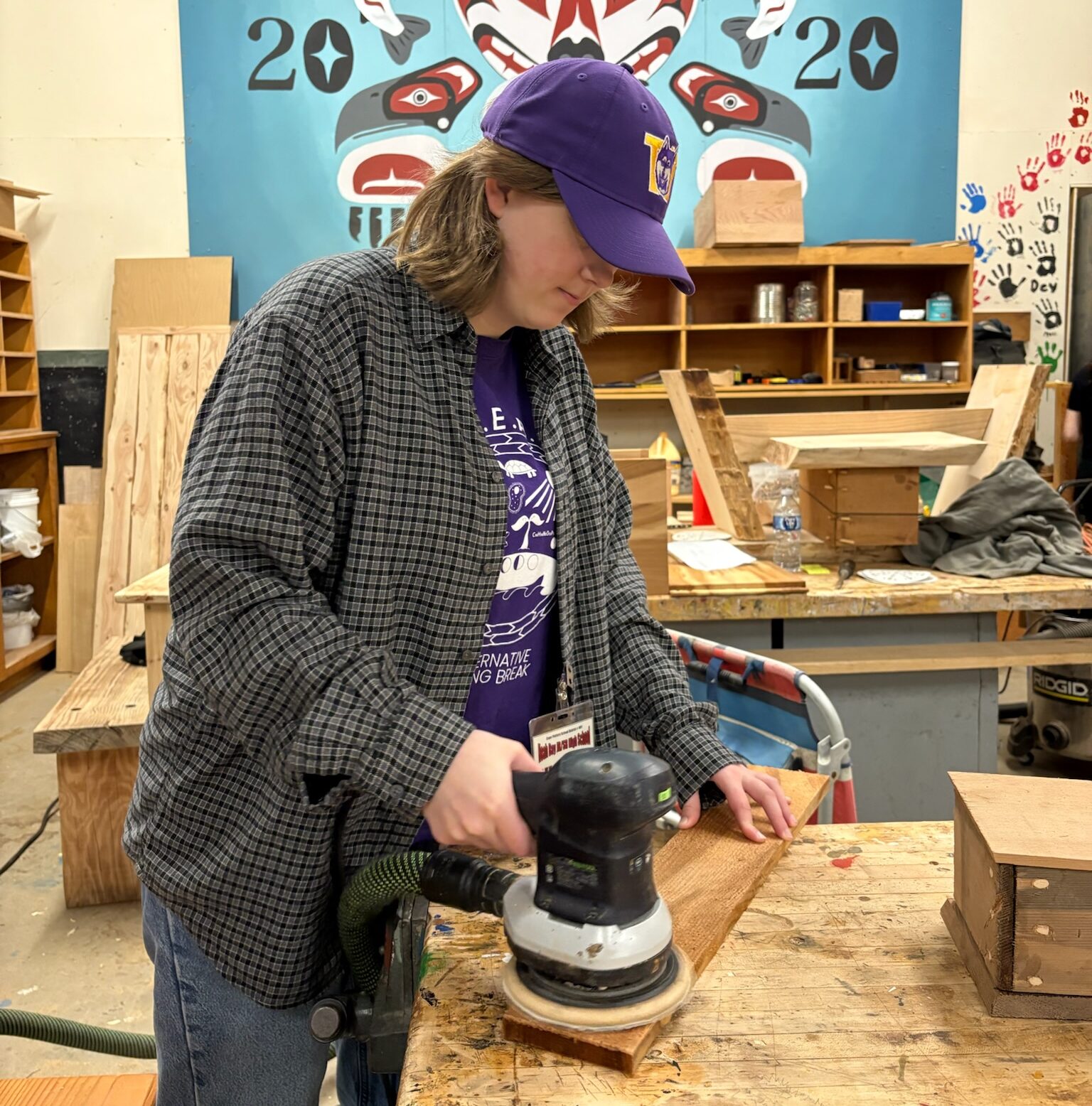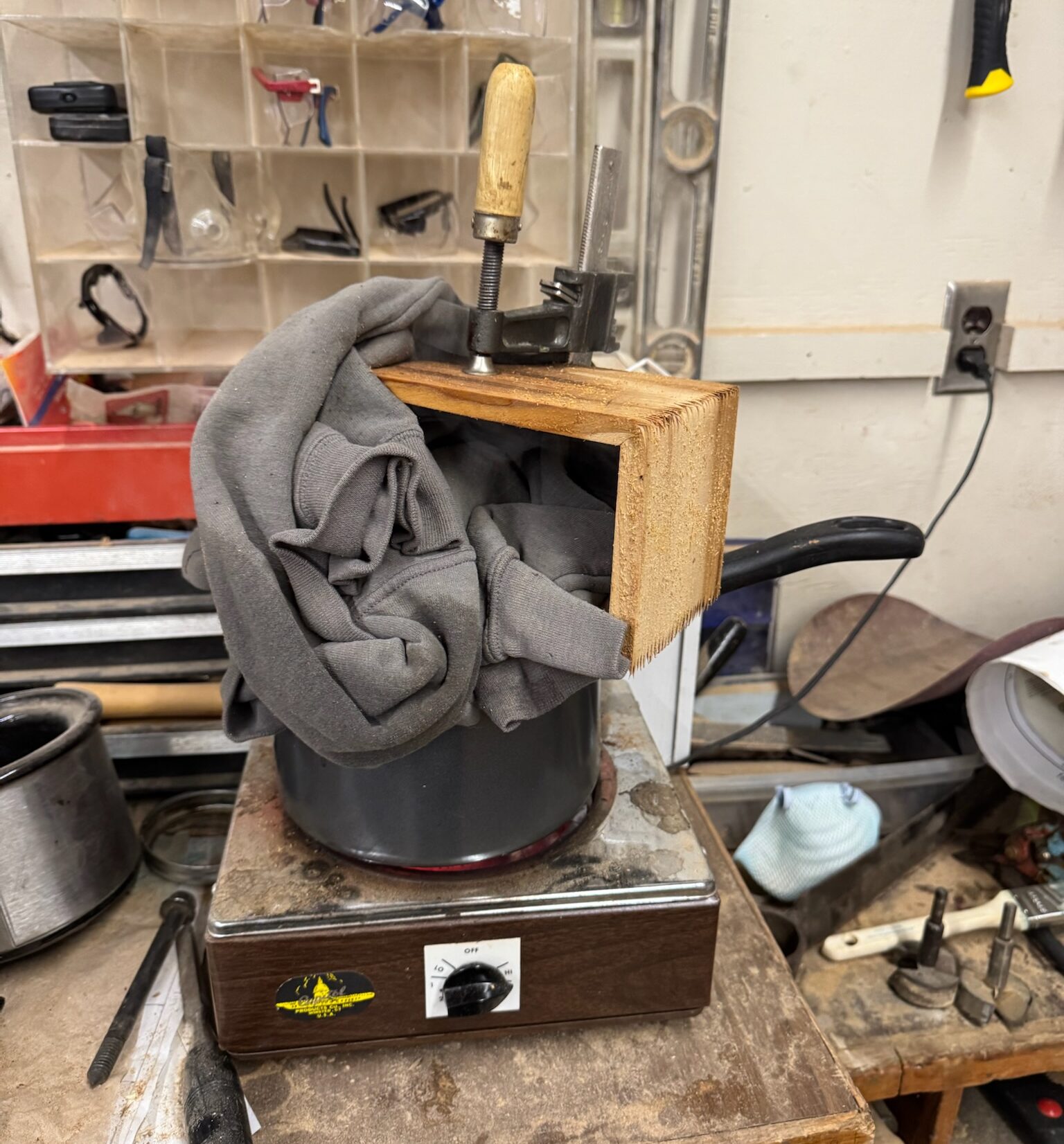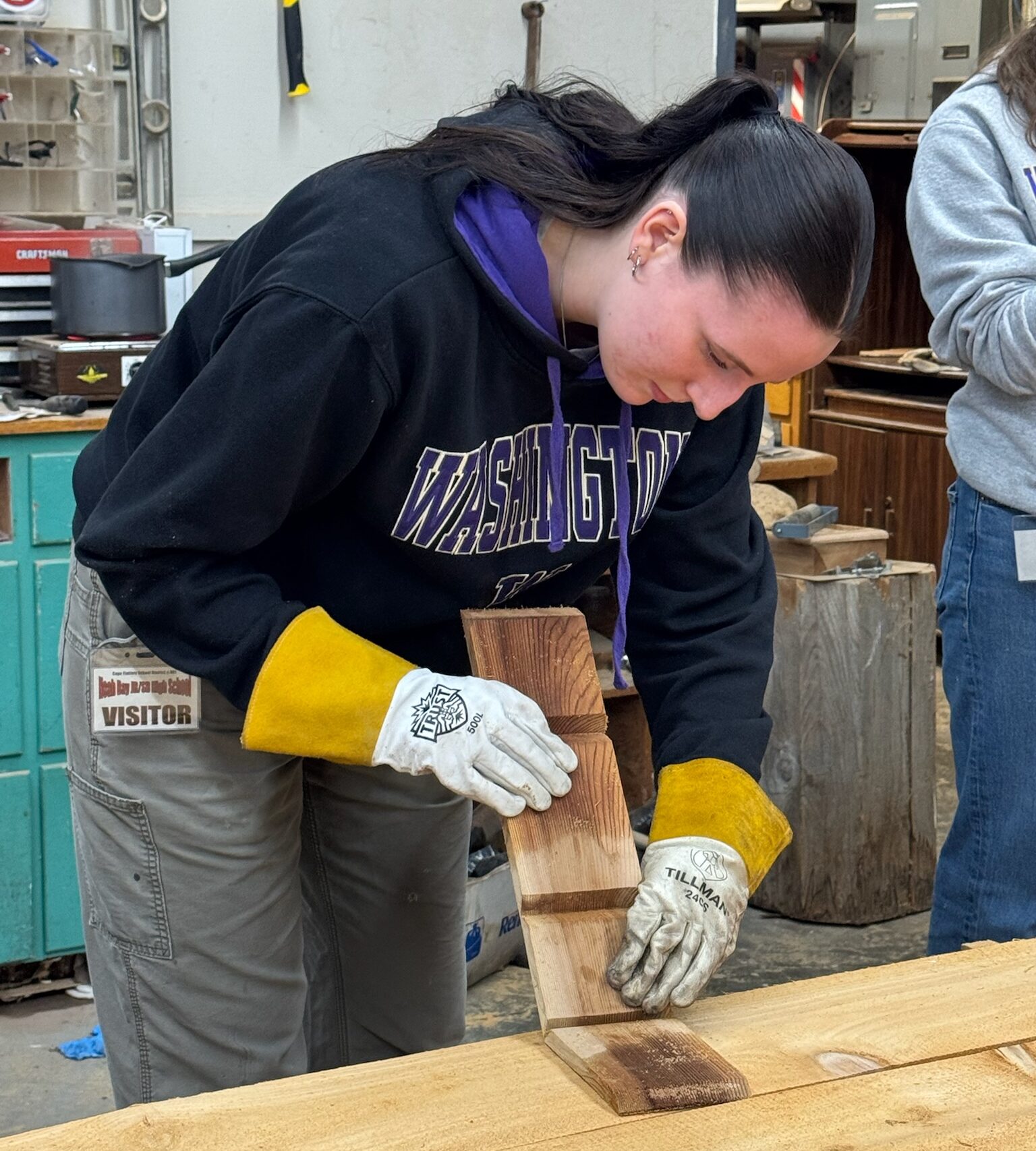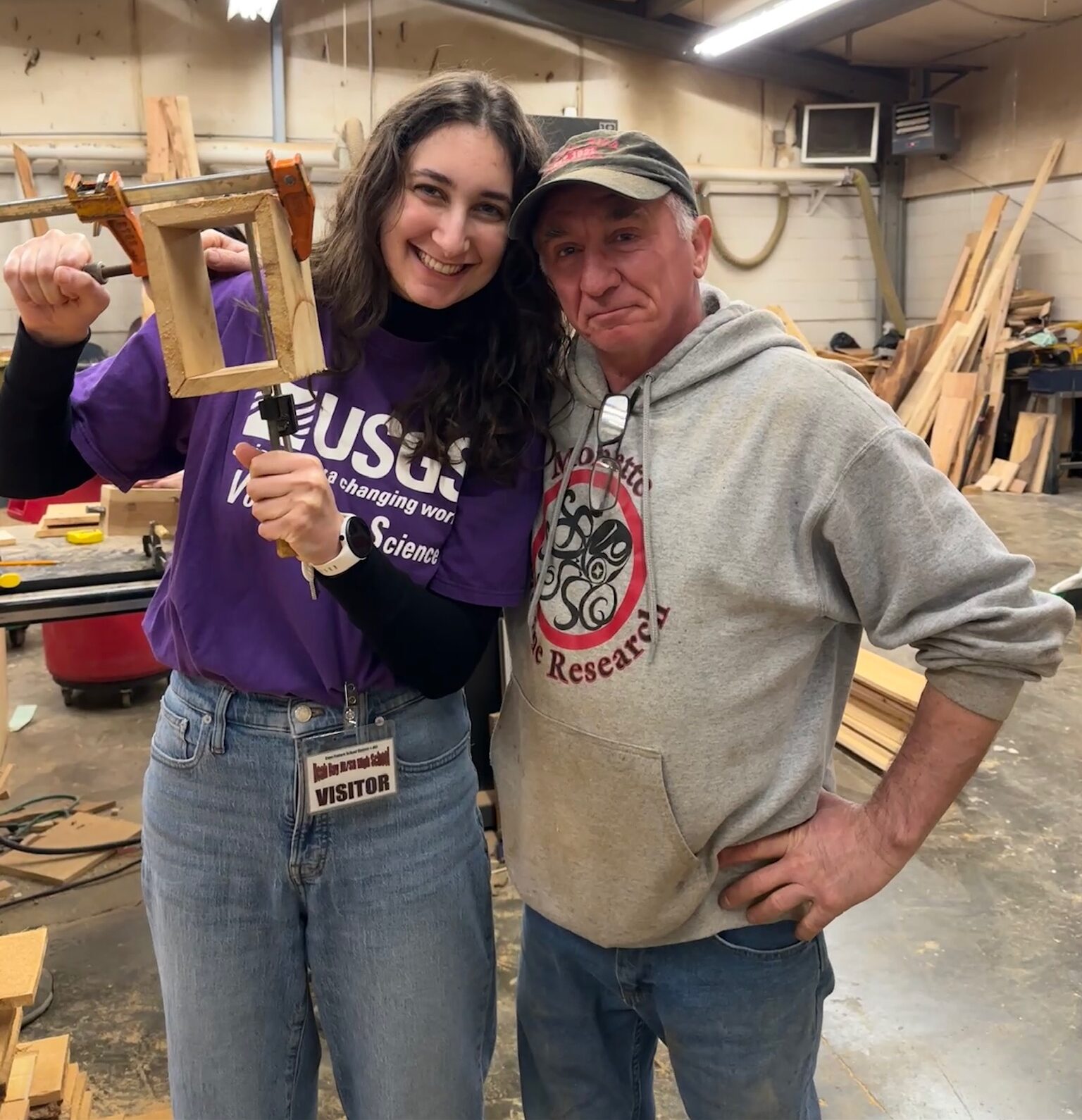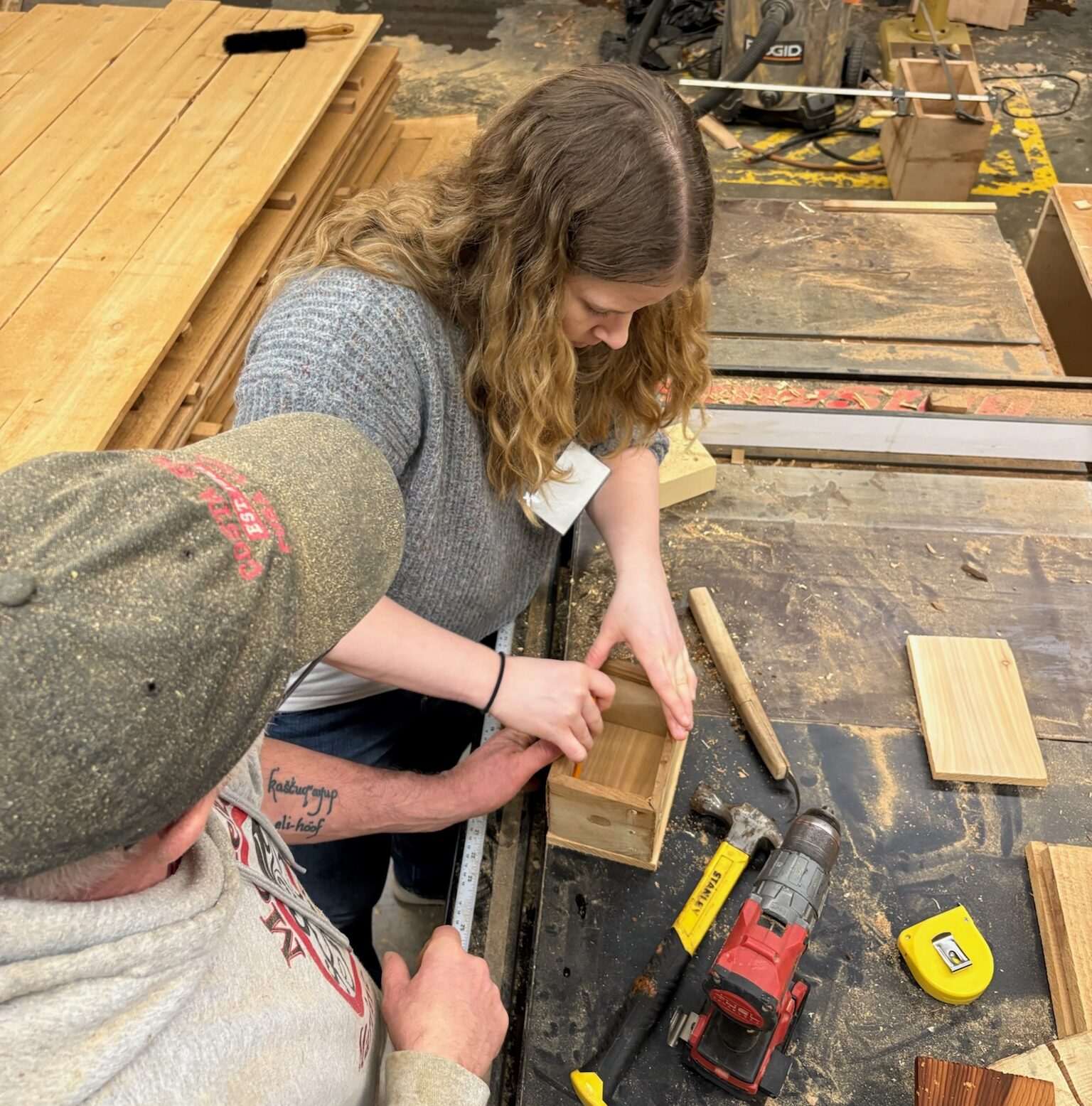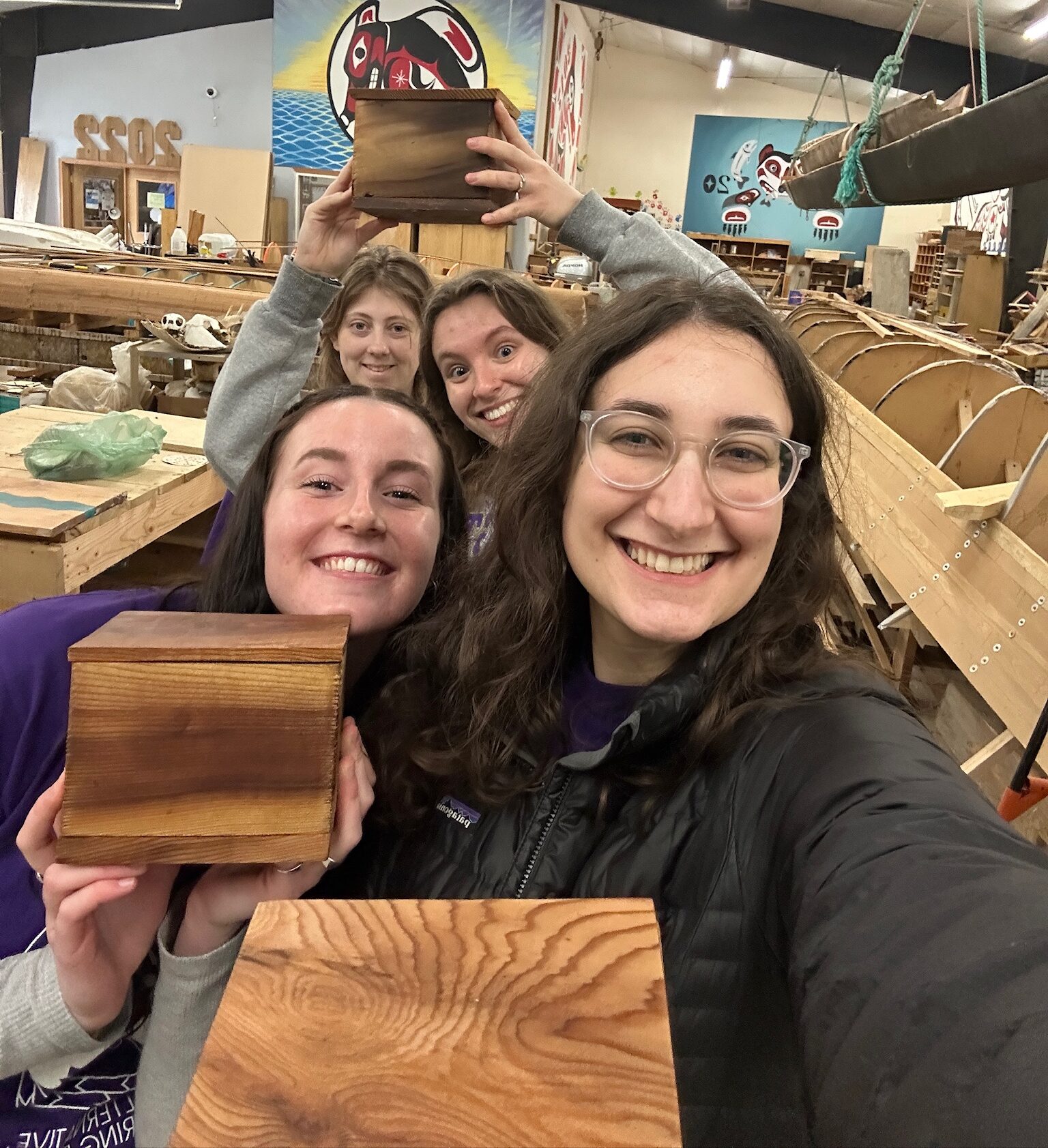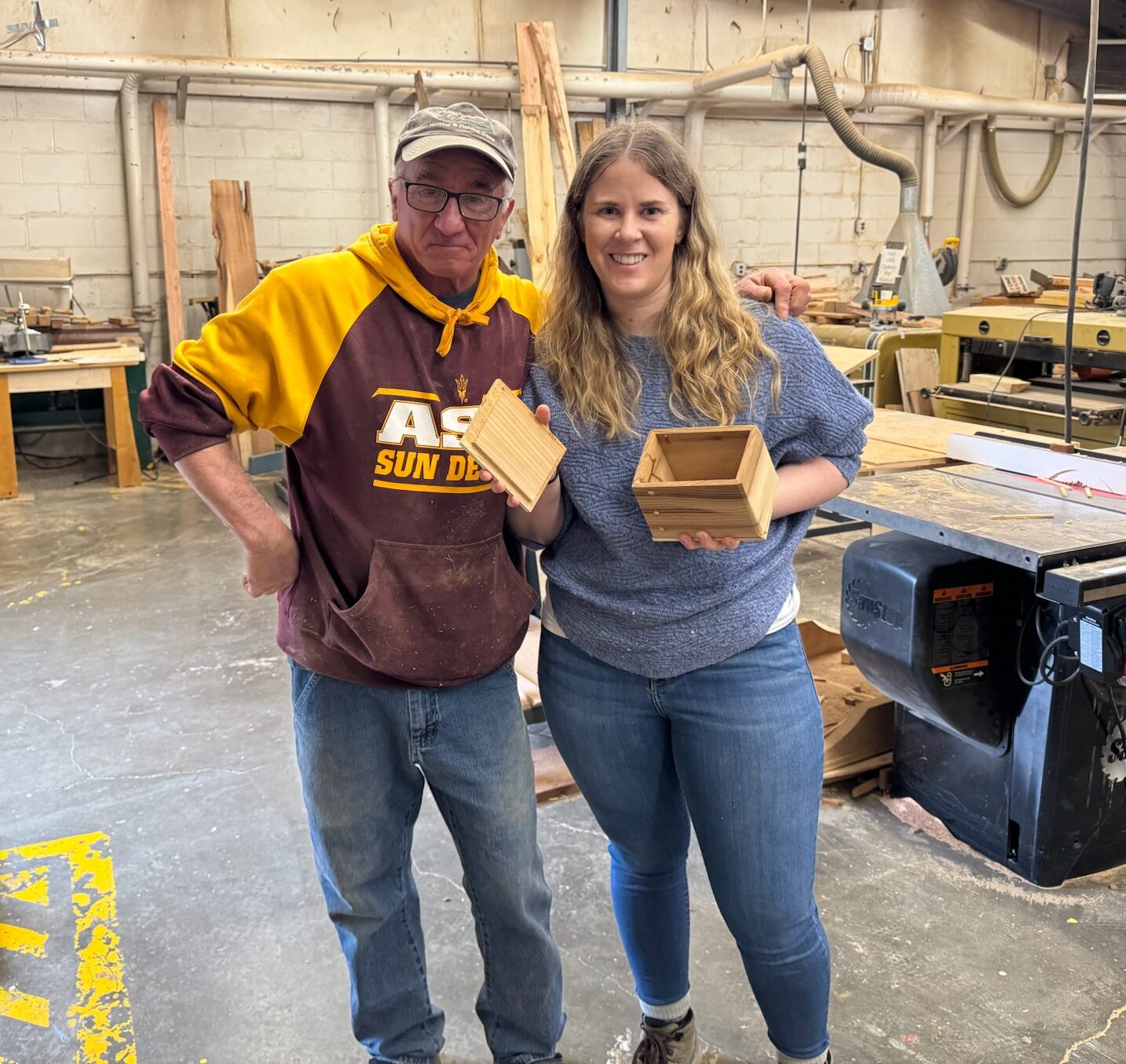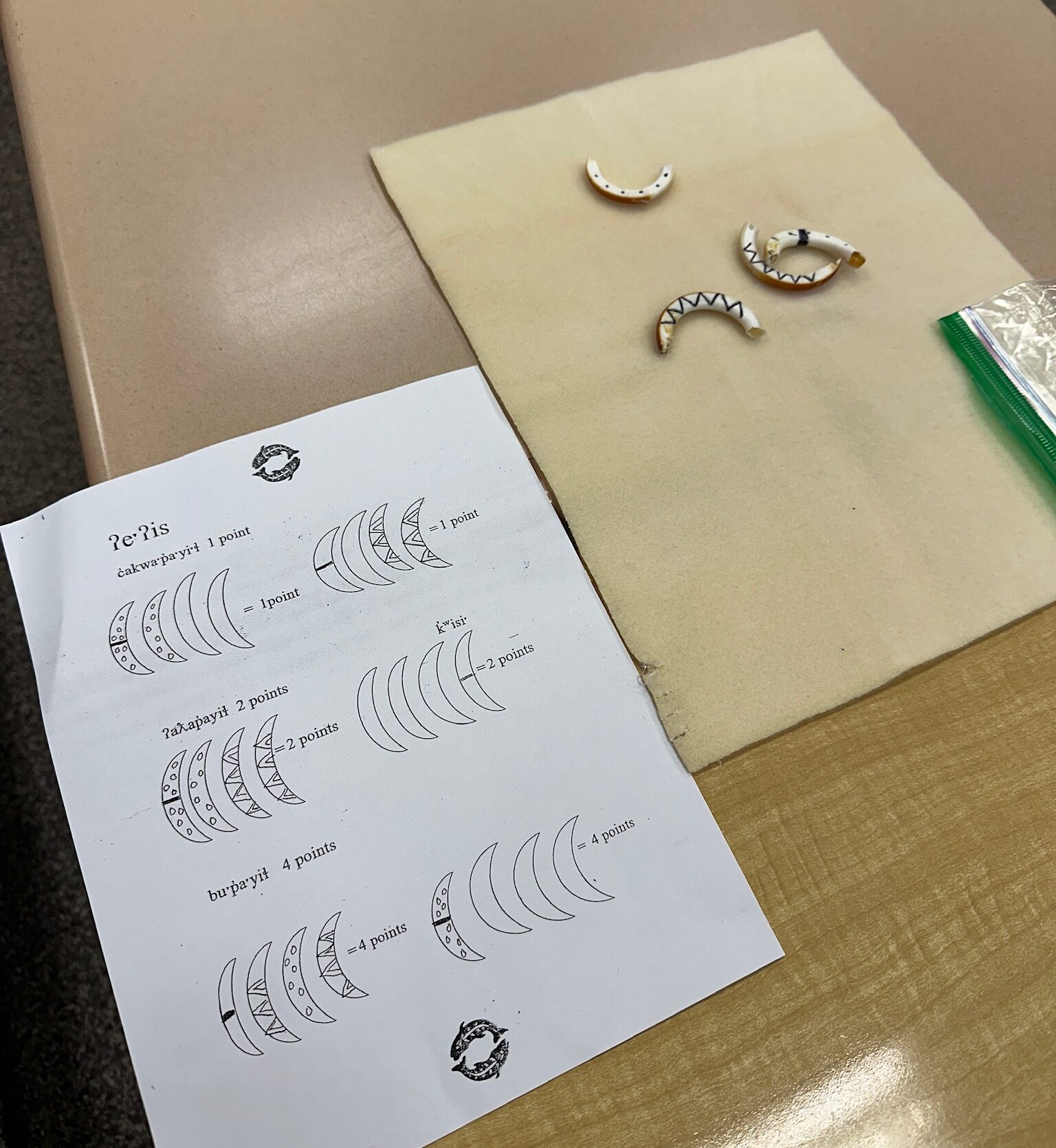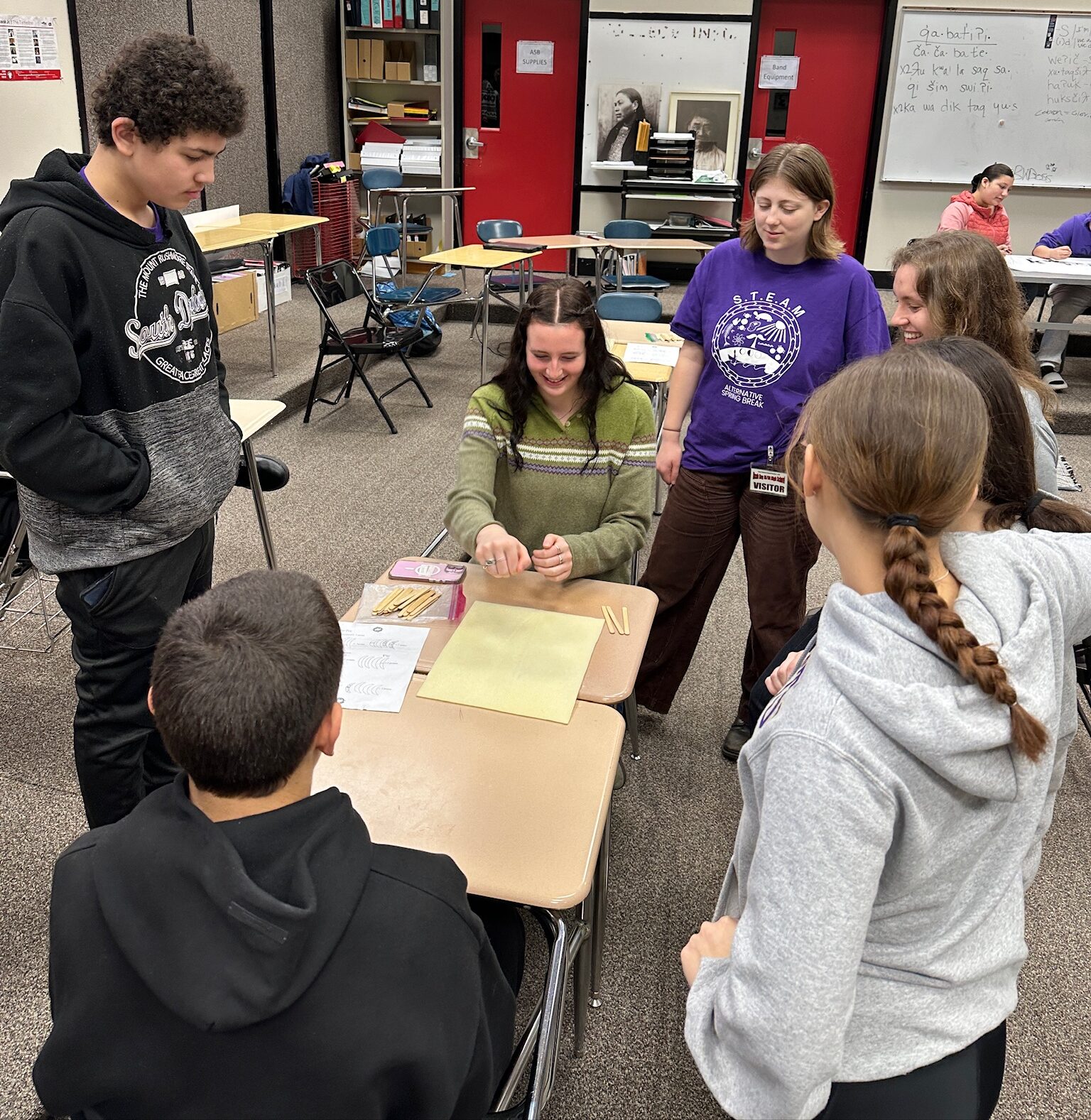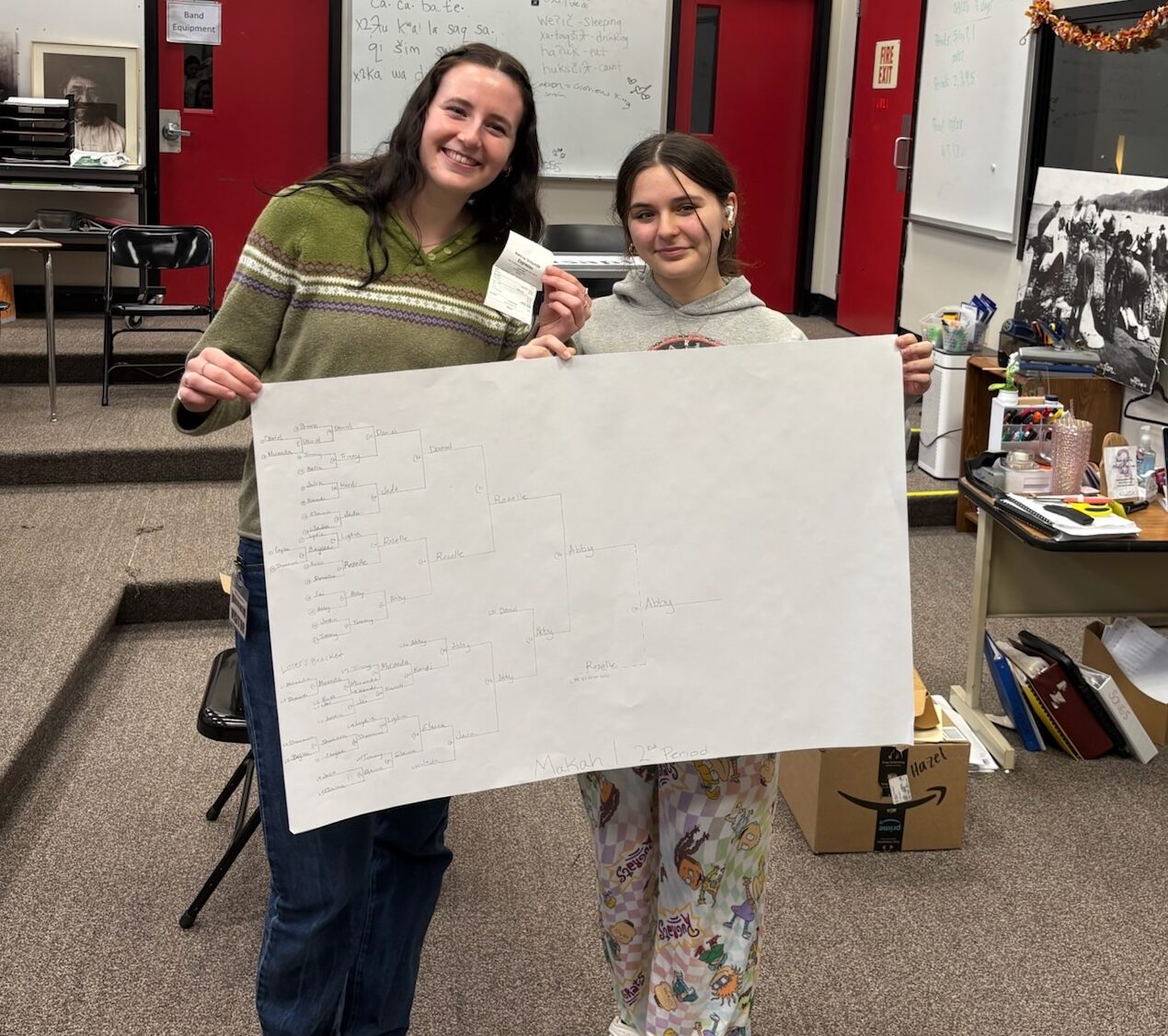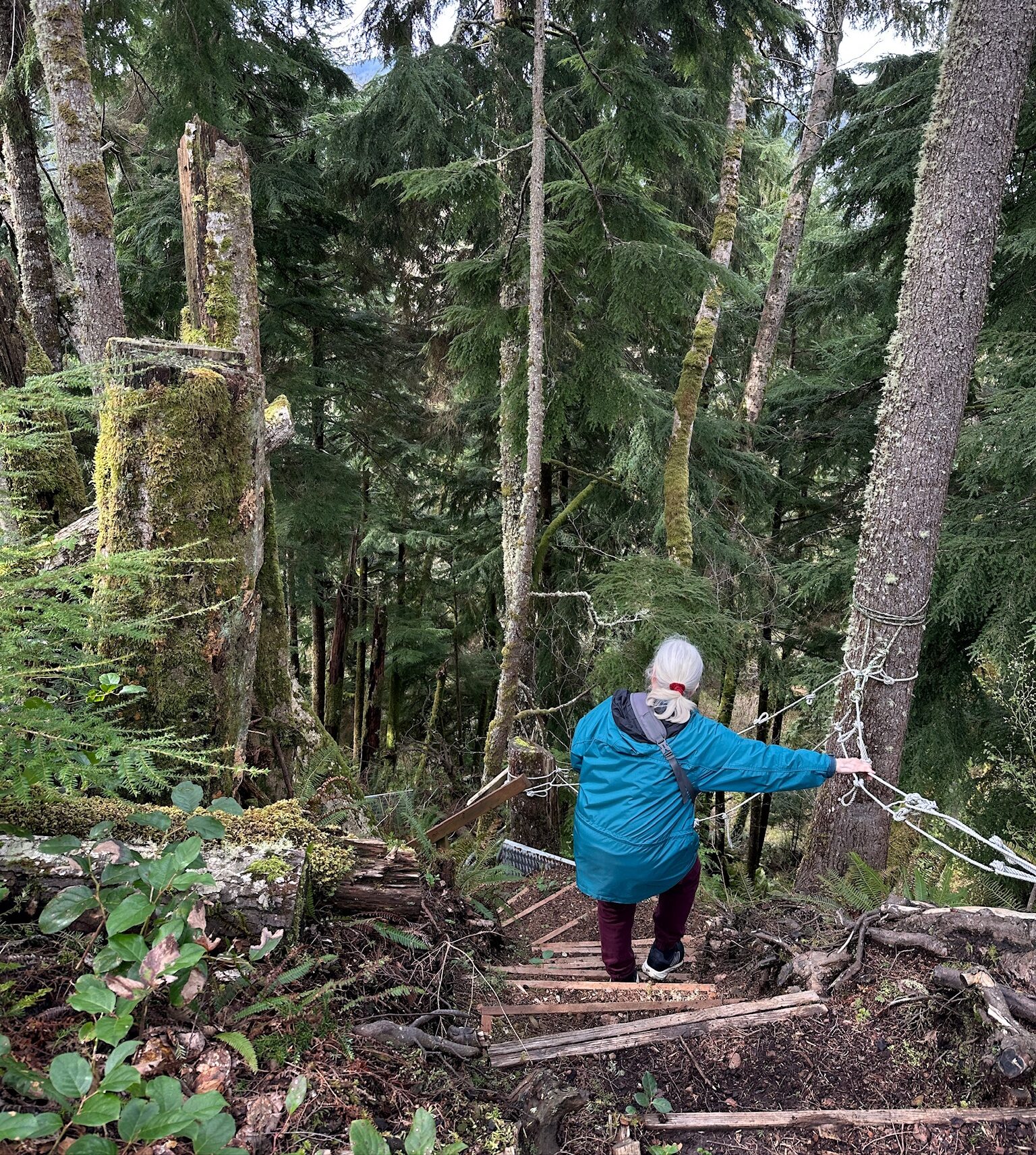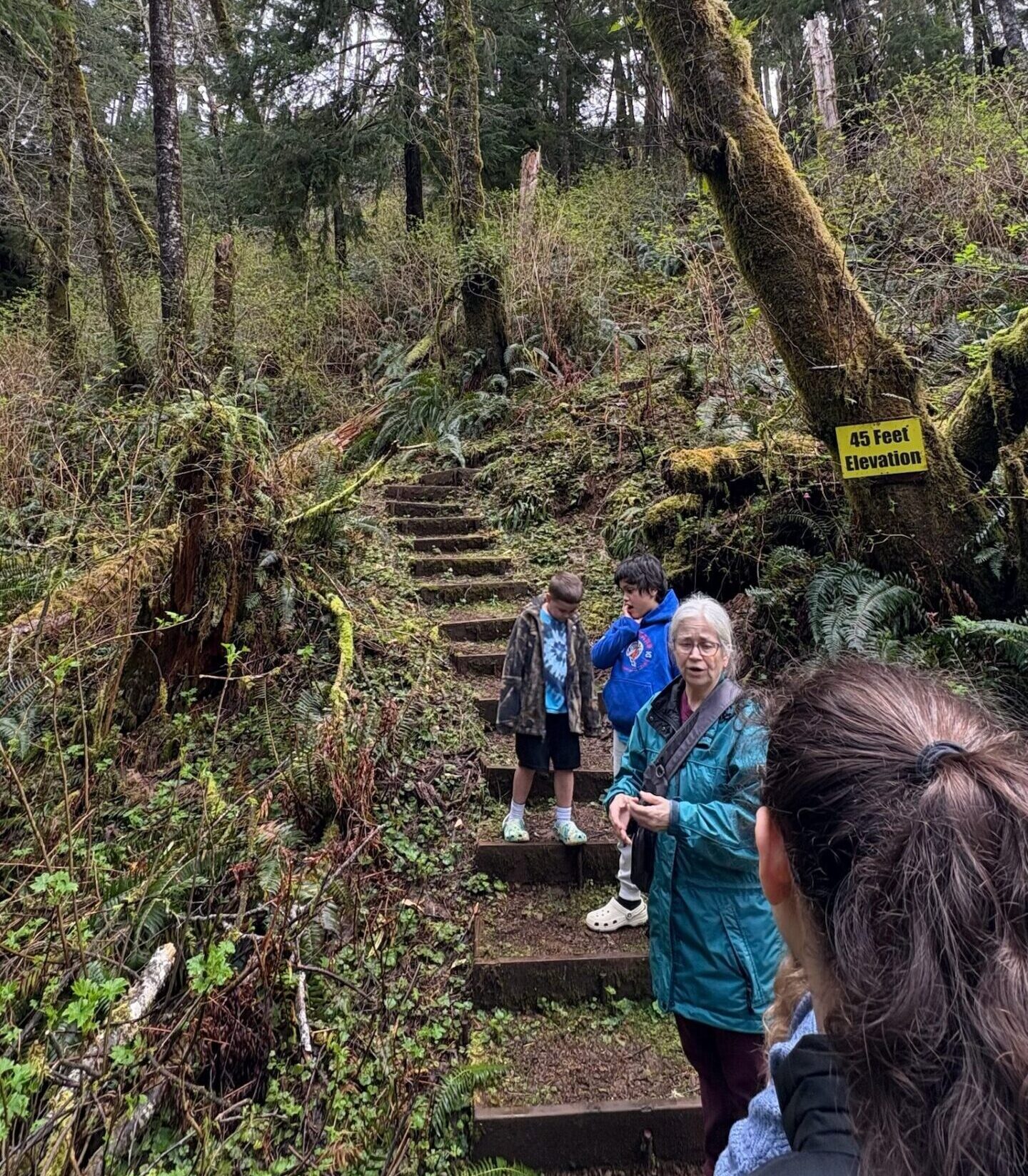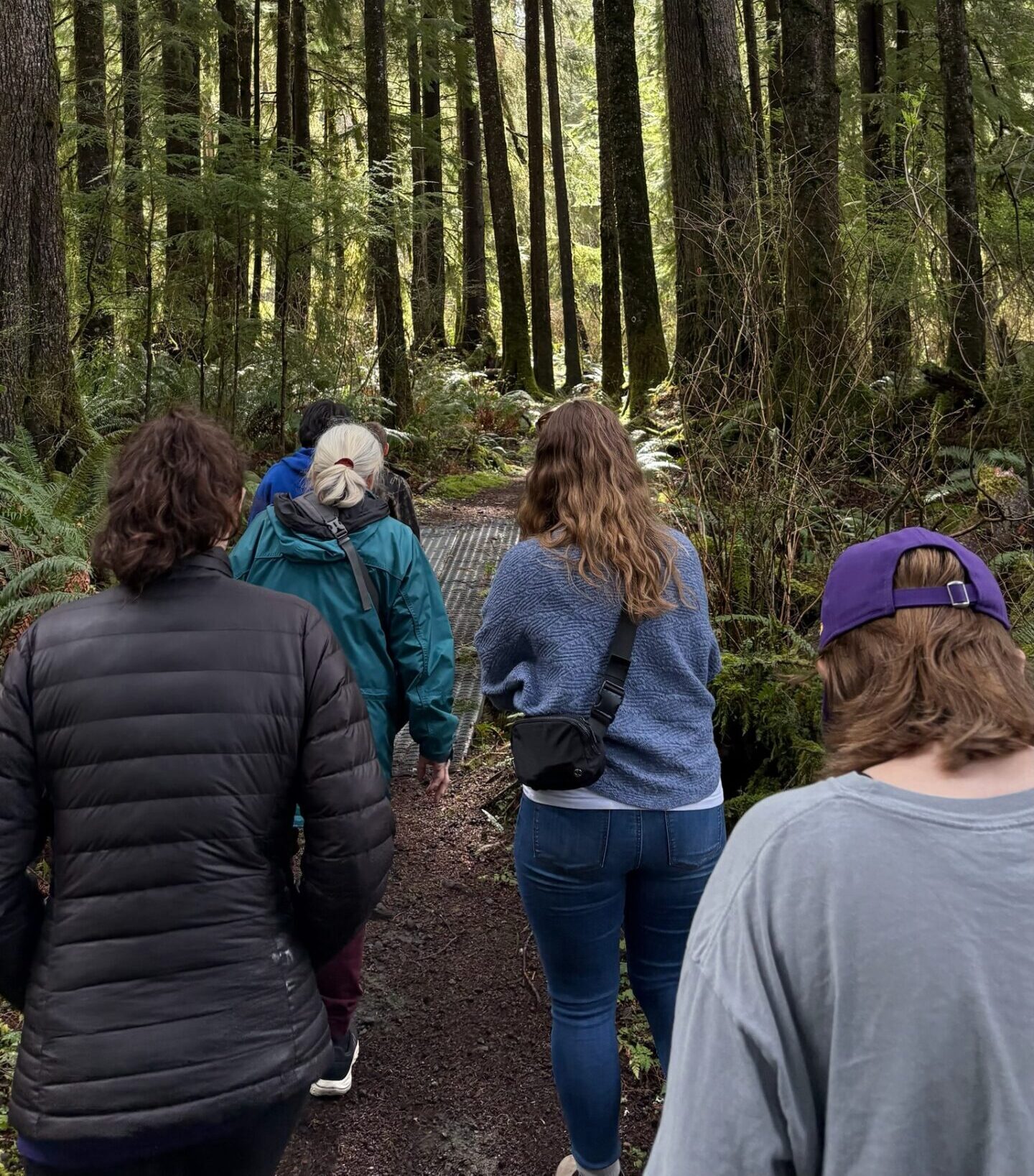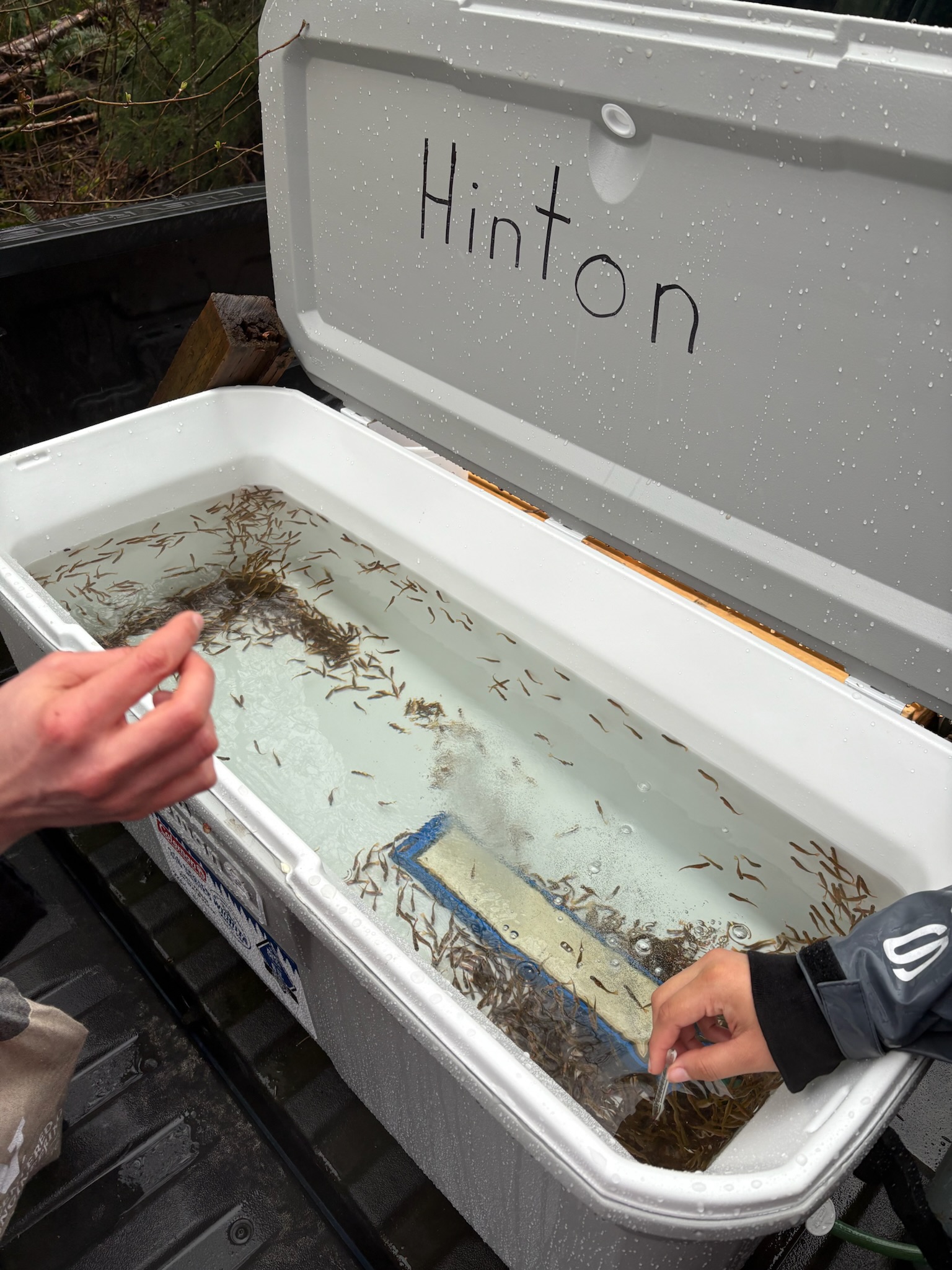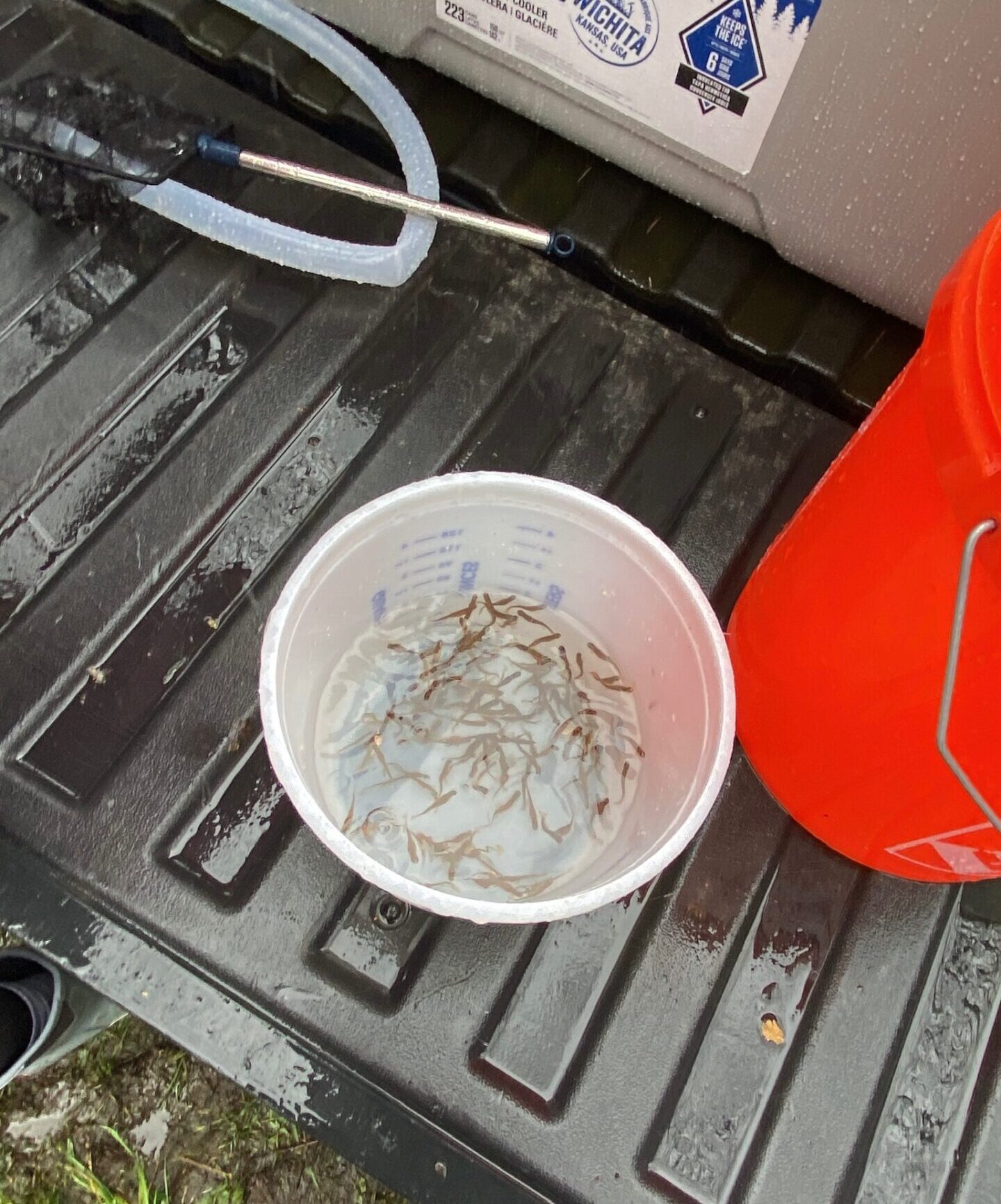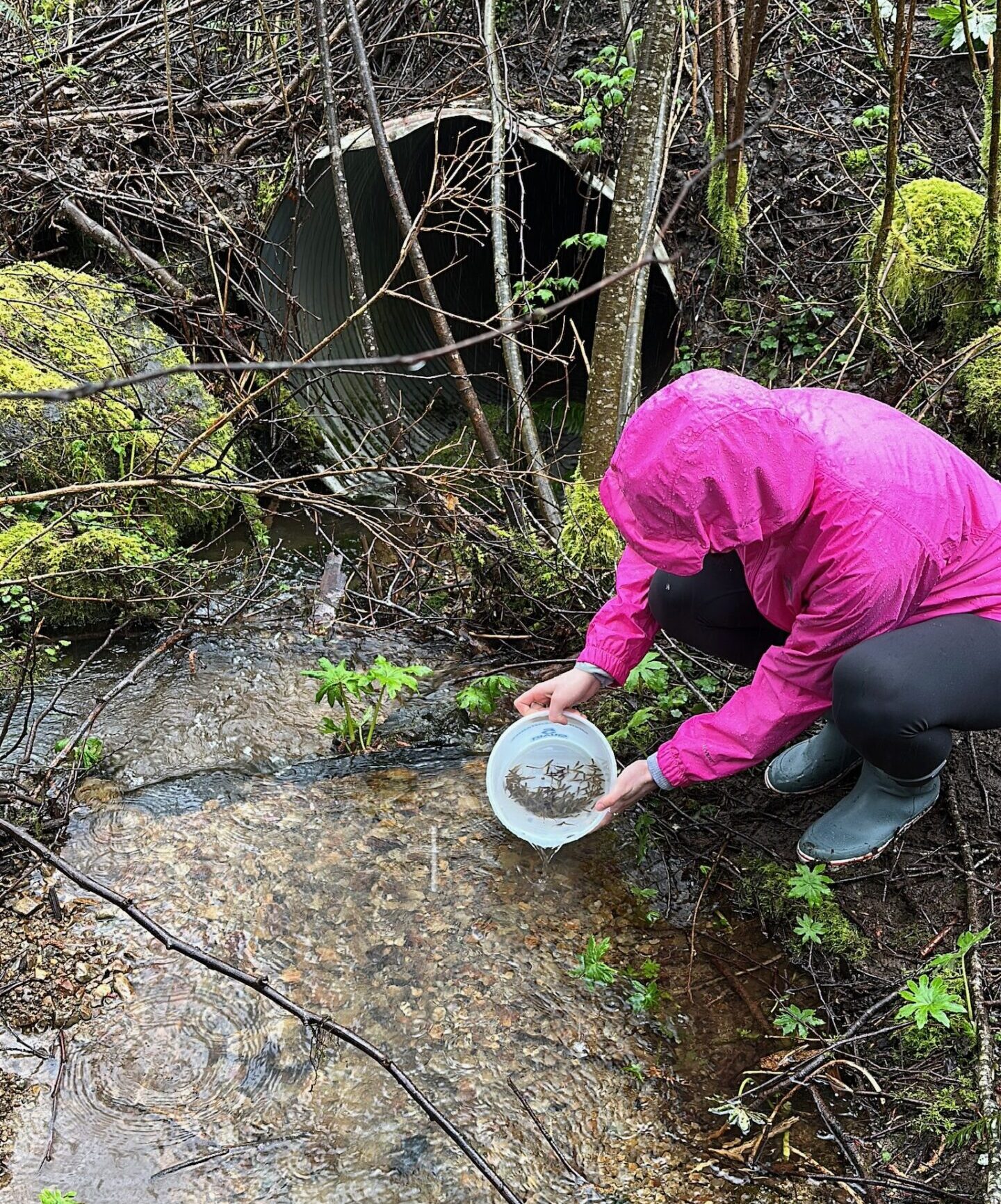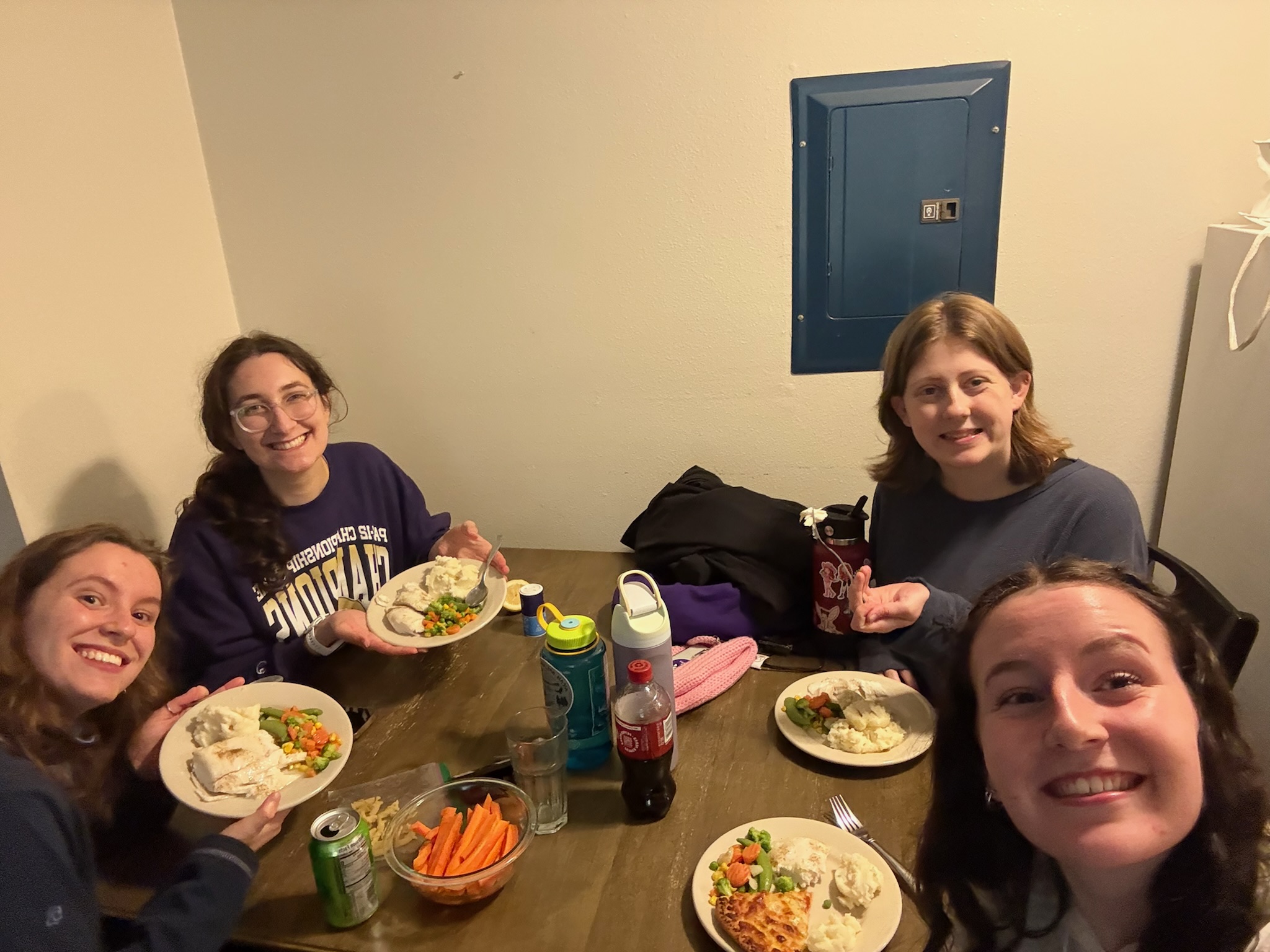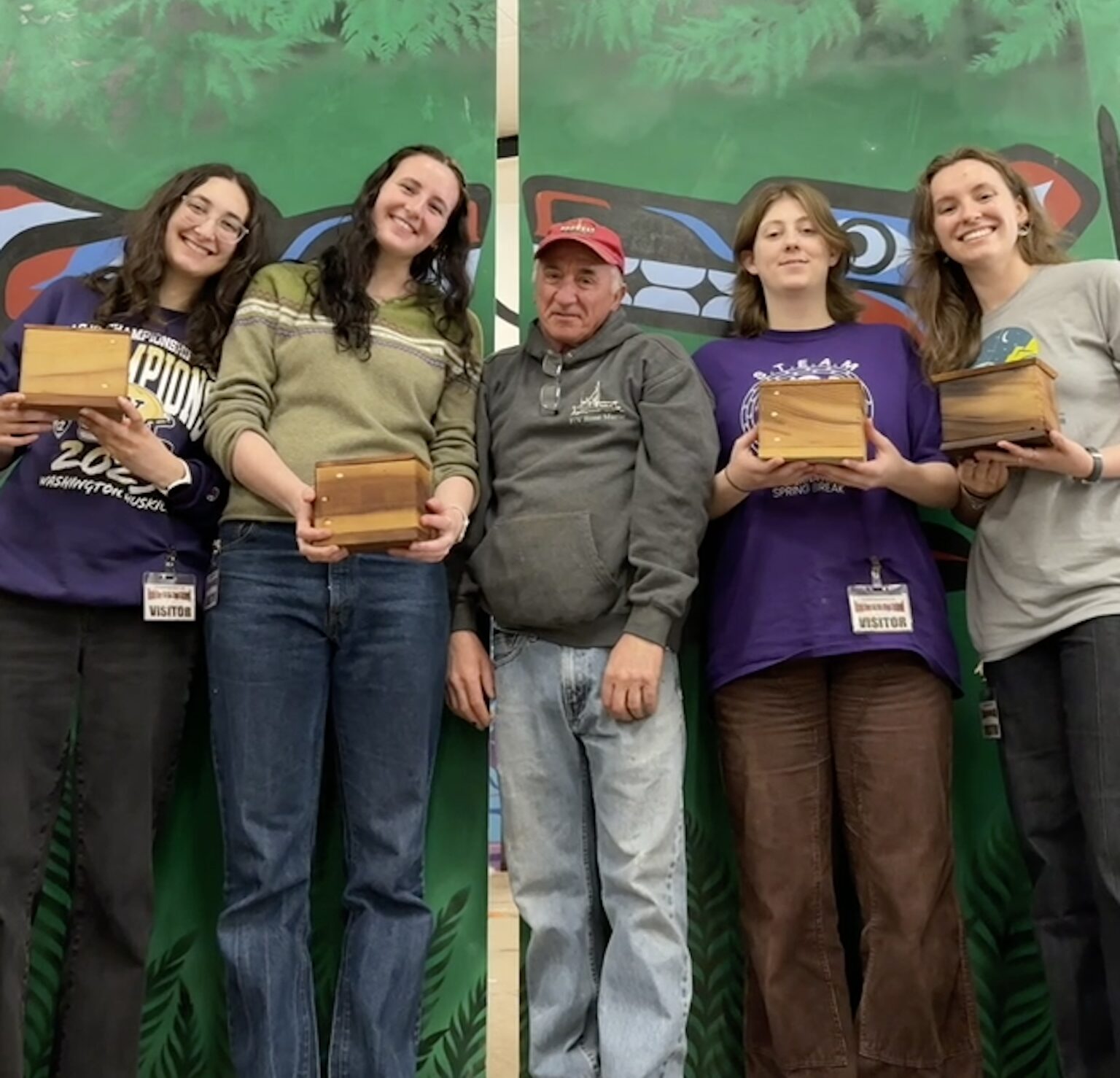
Makah CASE
STEM Alternative Spring Bring at Neah Bay High School
March 24 – 28, 2025
Blog post written by Julia Grossman
We had an awesome time at NBHS! We spent a week teaching about local geohazards, learning cultural traditions of the Makah Tribe, and getting to know the students, teachers, and incredible Neah Bay community.
We were in Neah Bay for 6 amazing days during UW’s Spring Break. During the preceding few months, we spent a lot of time developing our geohazards curriculum and planning our culture and science exchange. In this blog post, we’ll go around this circle of reciprocity and walk you through our week and our culture-science exchange.
Here are some of the highlights!
Teach Earth Science to high schoolers
Using culturally-sustaining pedagogy and place-based lessons, we designed a curriculum that focused on geohazards in the Pacific Northwest (e.g., earthquakes, tsunamis, and landslides). In Holly’s science classes, we discussed how these hazards can affect Neah Bay and how communities can be resilient to them.
On Day 1, we talked about “The Big One,” the M9 earthquake that has the potential to occur along the Cascadia Subduction Zone. Students synthesized evidence for earthquakes in the PNW and asked lots of good questions during our “snowball fight” Q&A activity.
On Day 2, we took our students on a field trip to the Makah Cultural and Research Center (MCRC). There, students learned more about the Ozette village, a traditional Makah village that had been covered by successive landslides hundreds of years ago. Makah elders spoke to the students and gave them tours of the museum, which houses many artifacts from Ozette. Janine (the museum director) and Rebecca (the museum historian) also gave students a behind-the-scenes tour of the Annex, which houses the 55,000 artifacts that are not typically available for public viewing.
During Day 3’s lesson, students learned about secondary hazards of earthquakes: landslides and tsunamis. To explore how both earthquakes and landslides can cause a tsunami, we did a “tsunami maker” activity outside with bins of water and floating origami boats. Students also analyzed a tsunami evacuation map of Neah Bay.
On our final day of teaching, students competed to build the tallest building that stayed standing during our hands-on shake table activity! Everyone enjoyed the challenge and also the hands-on nature of the lesson. They engineered their buildings really well; most of them survived our “earthquake”!
Share about our experience as UW students
To share about our experience as UW/college/graduate students, we set up a “College Table” during lunch period each day. We gave out informational material about UW, college, and other possible next steps after high school (plus lots of candy, stickers, and purple pens!). We discussed college with lots of students — many seniors are going to Peninsula College in Port Angeles in the fall!
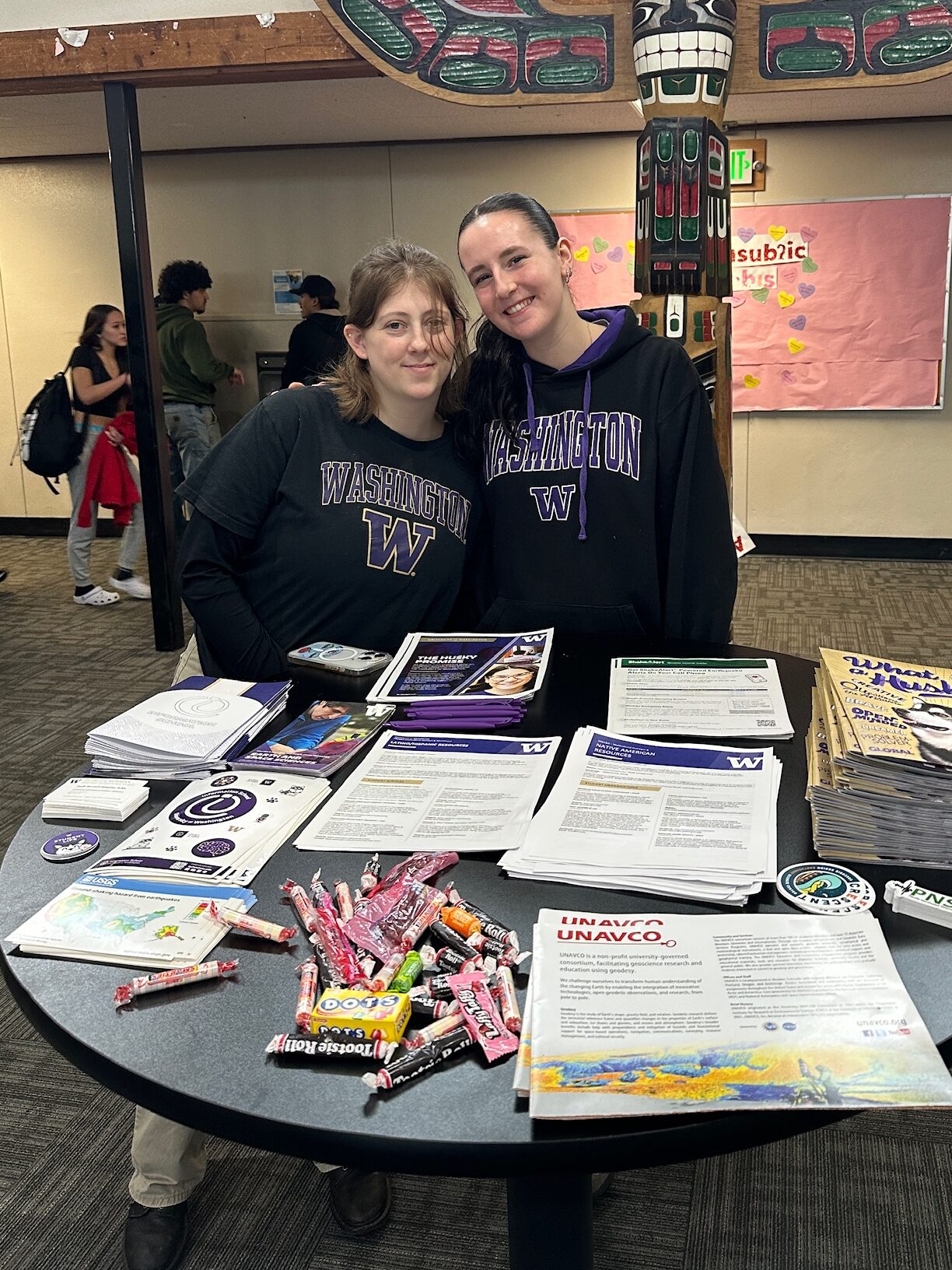
Mentor high school students interested in college
We continued to work with our team of awesome high school interns! We met with Qwaapeys, Nani, Kali, and Amnesty and discussed their projects: they came up with a team name, designed a team logo, conducted interviews of community members, and wrote blog posts for the CCASE blog.
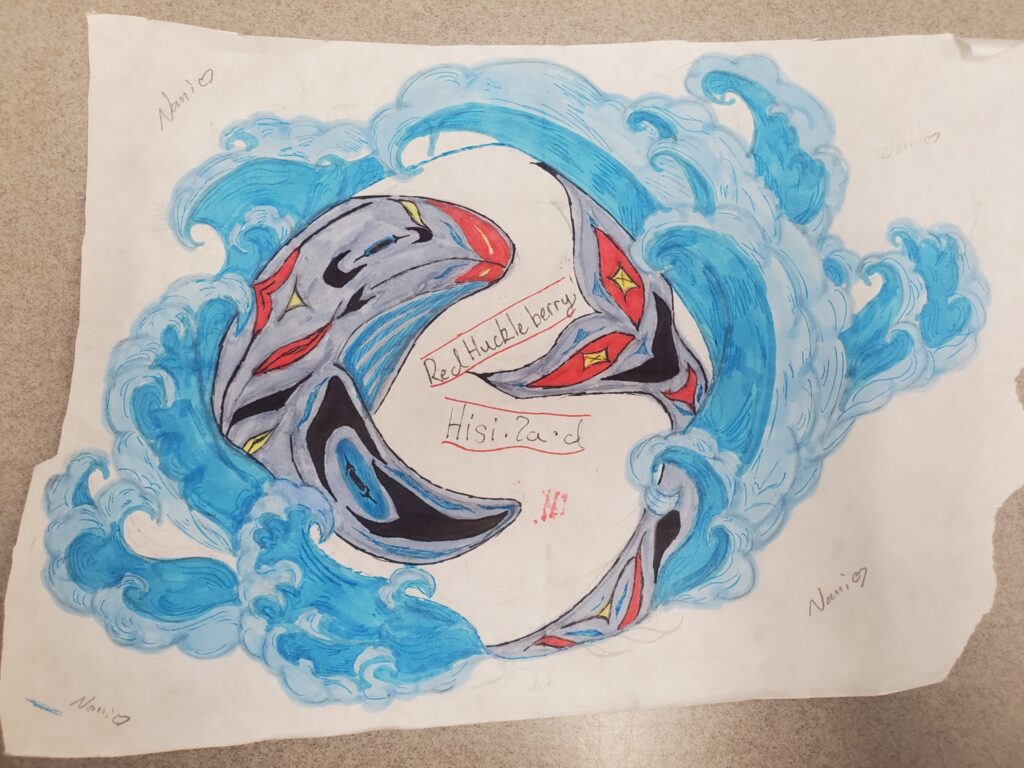
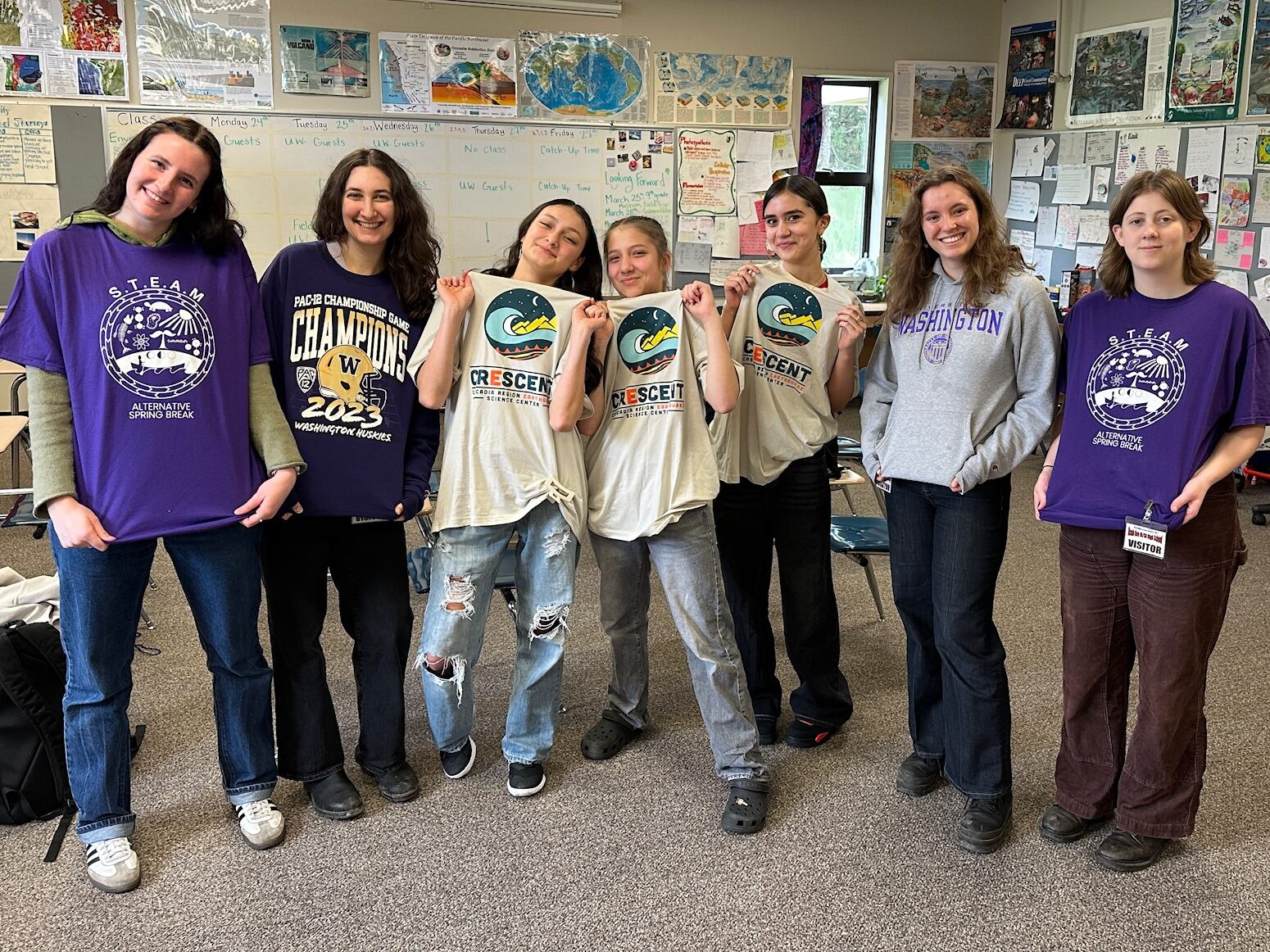
Participate in cultural activities (music, dance, art)
We spent a lot of our free class periods in woodshop with Paco, the incredible woodshop teacher! Throughout the week, he helped us make bentwood boxes. Bentwood boxes are traditional boxes made by Northwest Coast peoples that were often used for cooking. The boxes are entirely made of wood (no glue, nails, etc. are used to keep them together). We cut and steamed the wood so it could bend to form the 4 walls of the box. We saw early examples of these boxes from Ozette in the MCRC!
Teach indigenous languages and cultural traditions
We worked with Hazel, a language and culture teacher at Neah Bay, to learn some Makah vocabulary words. We learned words like ʔušu·yakšʔalc (thank you), ʔux̌u·ʔaƛa·ksa (hello all), ʔuquqɫas (my name is _____), ʔiyax̌c̓iƛs (I am from _____). We also learned some Earth Science-related terms, like taqi· (earthquakes), bu·ɫap(tsunamis), q̓ʷiƛ̓as (landslides), and incorporated them into our PowerPoint slides.
The students were so happy (and amused!) to see us using and pronouncing their native language!

Hazel also invited us to attend her Makah 1 language and culture class. There, we got to be “students” alongside a group of students that we taught later in the afternoon! During the week (which also happened to be the week of the March Madness tournament) we learned the traditional game ʔe·ʔis (pronounced: ahh-iss). In ʔe·ʔis, the players take turns rolling beaver teeth that have different combinations of markings on both sides. Players win points based on the combination of markings that they roll. Hazel set up a March Madness-inspired bracket for our class, which Abby (a member of our team) actually won!!
Share traditional knowledge, stories, and food
The Neah Bay community and Makah Tribe are so kind and open about their culture and heritage. We were able to learn so much from them.
On the field trip to the MCRC, we heard traditional stories from elders and were able to view the private Annex.
We also walked a grassroots tsunami evacuation trail with Elder Melissa Peterson. She had organized the construction of this community tsunami trail when she realized that there were not many evacuation routes from her neighborhood in Neah Bay. You can read more about this incredible (and ongoing) project here:
We were also incredibly honored to be invited to join the Marine Biology class on their salmon release. Year-round, the students run a coho salmon fish hatchery at the high school, and the week we were there happened to be the perfect time to release the fish into the wild. Salmon are incredibly important to the tribe, and it was a privilege to accompany them on such an important day.
On our last night in Neah Bay, we feasted on freshly-caught halibut from Taco. The fish was delicious, and it was an honor that Paco wanted to share his fish with us.

